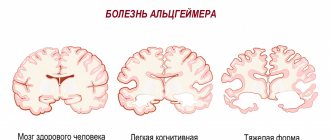In psychology, there is a term “psychosomatics”, it is used to denote the degree of influence of psychological factors on the occurrence and development of various somatic diseases. Treatment of psychosomatic diseases is based on finding and eliminating the patient’s psychological problems, since physical ailments in this case are only the body’s response to the influence of stress factors.
Features of psychosomatics
As noted above, psychosomatic disorders are a set of symptoms that arise in response to a stressful situation. These may be isolated manifestations, for example, weakness, dizziness or chest pain. But often psychosomatics manifests itself in the form of separate diseases. These include ulcerative colitis, rheumatoid arthritis, bronchial asthma and other pathological conditions. Under the influence of certain life circumstances, the human psyche and nervous system malfunction, the body is unable to adapt to the environment, and then various diseases arise.
But how exactly do psychosomatic diseases arise? In a stressful situation, the human body begins to accelerate the production of hormones responsible for an emergency response in times of danger. Dopamine, adrenaline and norepinephrine accelerate all physiological processes (the motility of the stomach and kidneys increases, the heartbeat accelerates and breathing becomes more frequent). Since organs and muscles require more oxygen at this moment, blood flow, and therefore pressure, in the vessels increases significantly.
When a person is safe, he should have a surge of emotions and the functioning of the cardiovascular system should normalize. But if such a discharge does not occur, then vascular spasm persists, and arterial hypertension develops. In modern conditions, a person often has to restrain his emotions, especially negative ones (aggression), which inevitably affects changes in the internal organs.
The cardiovascular system
1. Coronary artery disease. Causes myocardial ischemia. It is characterized by episodic subcardial pain (angina attacks), discomfort, and pressure. Coronary insufficiency in a significant proportion of cases leads to the development of myocardial infarction. F. Dunbar described the personality of coronary patients as aggressive-compulsive - with the desire to work hard and gain authority. Later Friedman and
Rosenman identified Type A and Type B personalities, with Type A being more associated with the development of coronary heart disease. Type A personalities are action-oriented and hostilely competitive. Type B personalities, on the other hand, are calm, less aggressive, and fight less hard for their goals. In personality type A, the amount of low-density lipoprotein, serum cholesterol, triglycerides and 17-hydroxycorticosteroids is increased, which contributes to the development of coronary heart disease. When treating the disease, tranquilizers (for example, diazepam) are prescribed to ease psychological disturbances. For pain, narcotic analgesics (for example, morphine) are used. Psychotherapy is needed to maintain morale, confidence in recovery, and reduce stress, compulsion and tension.
2. Severe hypertension . Arterial hypertension is an increase in blood pressure to 160/65 or higher. Common (eg, 20% of American adults). Persons with high blood pressure are quite adequate in appearance. They complain a lot, are compulsive, and can accumulate rage, although they do not openly express anger. The disease is promoted by genetic predisposition; the tendency to suppress and repress anger translates it into illness. In addition to antihypertensive drugs (capoten, capazid, enalapril, ednit, diraton, cardaflex, etc.), supportive and behavioral psychotherapy (for example, meditation, relaxation, bioreinforcement) is successfully used in treatment.
3. Heart failure. A decrease in the volume of blood ejected by the heart reduces tissue blood flow, leading to stagnation of blood in both circulation circles. Conflicts and mental trauma often influence the onset or exacerbation of the disease. Psychotherapy therefore plays an important role in the treatment of the disease.
4. Vasomotor (vasodepressive) syncope. As a result of a decrease in sympathoadrenal and increase in vagoinsular activity, the volume of ejected blood decreases, due to vasodilation, peripheral vascular resistance decreases, and bradycardia develops. Poor blood supply to the brain and hypoxia cause fainting. All these processes seem to be triggered by fright or acute fear. Psychotherapy is needed: determining the cause of mental trauma and increasing resistance to it. In case of orthostatic collapse, the patient is recommended to slowly move to a standing position; During fainting, the patient's legs should be elevated.
5. Cardiac arrhythmias. Life-threatening arrhythmias (ventricular tachycardia, ventricular fibrillation), sinus tachycardia, ST and T wave changes, ventricular ectopy, increased plasma catecholamines and free fatty acid concentrations may be associated with emotional trauma. Emotional arrhythmia requires psychotherapy and beta blockers.
| | Arrhythmia can be one of the many symptoms of a panic attack |
6. Psychogenic cardiac complaints in persons who do not suffer from heart disease. We are talking about cardiophobia and even delusions of heart disease, which refers to an anxiety disorder; in ICD-10 it is mentioned among the manifestations of somatoform autonomic dysfunction as Da Costa syndrome (G45.30). This is also a syndrome of "neurocirculatory asthenia", described by Da Costa under the name "irritable heart". There are 20 other names for this poorly defined disorder. The disease begins at the age of 12–22 years, but also occurs in middle age, and is twice as common in women. It runs chronically with periodic exacerbations.
Diagnostic criteria: 1) respiratory complaints such as painful breathing, inability to take a deep breath, suffocation and shortness of breath; 2) palpitations, chest pain or discomfort; 3) nervousness, dizziness, weakness or discomfort in crowds; 4) excessive fatigue or limitation of activity and 5) excessive sweating, insomnia and irritability. If phobias predominate in the manifestations of the disease, psychotherapy is effective in identifying hostility, unacceptable sexual impulses, addiction, guilt, and fear of death. Physical impact programs (learning proper breathing, for example) are combined with group psychotherapy. For significant anxiety, tranquilizers (diazepam) are prescribed, for asthenia - nootropics, for vegetative dystonia - anaprilin.
What causes psychosomatic illnesses?
The most common cause of psychosomatic illnesses is internal conflicts. It is quite difficult for a person to identify and understand them on his own. For example, since childhood, a child has become accustomed to meeting the expectations of his parents or teachers, but his own desires and needs remain unsatisfied. All this leads to the fact that internal balance is lost, tension grows, and negative emotions that have not received the proper release accumulate. In this state, even minor stress can lead to physical disorders and provoke, for example, a hypertensive crisis or an attack of bronchial asthma.
But not every stress turns into psychosomatics. The decisive factor here is not external circumstances, but the body’s reaction to them. Researchers have found that there are two types of stressful situations: eustress (conditionally positive) and distress (conditionally negative). In the first case, the body reacts actively, tuning into a fight, and in the second, passively. The second reaction does not provide the opportunity to adapt to changed living conditions, but only consumes internal resources, causing illness and disease.
Every year the number of cases of psychosomatic diseases increases. According to statistics, in every second patient the disease is caused by psychological problems. Even viruses do not cause such destructive harm to the body as suppressed emotions and experiences.
How the mind affects the body
But let's return to the definition of Louise Hay's ailments. In her table she lists the causes and consequences of diseases. Match - 90-95%.
Head
For example, the head is what we show to the world. If there are problems with the head, it means that there is something wrong with us.
Hair is power. When we are afraid of something, we create a hoop that first compresses our shoulders and then rises to our head. Hair grows from follicles. When fear creates overstrain in the skull, the hair follicles shrink on their own, nutrition stops, then the hairs become thinner and then begin to fall out.
If stress does not decrease, but continues to increase, the skull does not relax, hair stops growing, and the result is baldness. The woman also began to go bald when she infiltrated the men's affairs.
Ears – symbolizes the ability to listen and hear. If problems with the ears begin, it means that the person does not want to hear anything at all. Ear pain means you are under extreme stress from what you hear.
Children often have ear pain. This means that in the family they have to listen to what they don’t want to hear. The child cannot express his anger; he is forbidden to do so. It is precisely this impossibility that leads to ear diseases. Deafness is a persistent unwillingness to listen to anyone.
Eyes are a symbol of the ability to see. When problems with the eyes appear, it means that a person does not want to see something, perhaps in himself, or in his life. When a child wears glasses, it means that something is happening in the family that he does not want to look at.
A child cannot change the situation that is happening in his family, then he simply blurs his vision so that his eyes cannot see clearly.
Headache - from a feeling of wrongness. The next time you have a headache, ask yourself why and under what circumstances you feel humiliated. Forgive yourself for this feeling and it will go away, followed by the headache.
Cervical region
The neck denotes the ability to think flexiblely. When problems appear in this part of the body, it means that we are stubborn in some way, refusing to show flexibility.
The throat is a symbol of our ability to stand up for ourselves, to ask for what we want. Throat diseases appear when we tell ourselves that “I have no right,” then we “grow” a feeling of inferiority.
A sore throat is most often a sign of rage, and if the pain appears due to a cold, then embarrassment is also mixed in. Laryngitis indicates: we get so angry that we even stop making sounds. All the creative energy of our personality is still collected in the throat.
Ailments of the tonsils and thyroid gland indicate that you have not realized yourself creatively. It is in the throat area that changes that concern us should take place. If we begin to resist change, then throat ailments arise.
Have you noticed that sometimes out of nowhere a cough attacks us, or someone else starts coughing. Please note, perhaps at this moment a process of change is taking place, and we are being stubborn and resisting the process of change.
Thoracic region
The back is support. Back problems mean you lack support. You think that your family and friends support you, but in fact you are supported by the Universe and Life itself.
- If you have pain in the upper back, then you lack support on an emotional level: “My husband or friend does not understand me, there is no support from him.”
- The middle part of the back is a feeling of guilt. As if you are afraid that something is behind you or you have the feeling that someone has stabbed you in the back.
- If you constantly worry about money, you could be setting yourself up for lower back problems.
The lungs are a symbol of the ability to give life. Lung problems are fear or reluctance to live to the fullest. You may feel that you don't have the right to live life to the fullest. Smokers generally deny life, hiding the feeling of their inferiority.
Breasts represent motherhood. Problems with the mammary glands mean that we have crushed another person or situation with our attention. And breast cancer is an accumulation of anger, strong resentment. Treatment together with medications is liberation from resentment, fear and anger.
The heart is love and the blood is joy. When there is no place for joy and love in your life, your heart is compressed and coldness creeps into it. In a frozen heart, blood flows slowly, bringing us closer to vascular sclerosis, heart attack, and anemia.
We often create tragedies for ourselves, then we get so entangled in them that we stop noticing the joy that is so abundant around us!
Digestive organs
The stomach can digest everything: situations, new ideas. Stomach problems appear when we cannot “digest” something new that appears in our life, we do not know how to assimilate a new situation. We're just afraid!
There was a time when they started flying on airplanes. It was so unusual for us that it was difficult for us to even imagine. There were bags on each seat in case of feeling unwell. Now no one uses packages, that is, we accepted the flight situation.
A stomach ulcer is fear, as well as the feeling that we are not as good to our parents, bosses, teachers as we would like. We try to please them. Even a person in a high position may lack self-esteem.
The path to solving a problem is love . People who respect themselves do not have ulcers. Be gentle and attentive to the child who always lives inside us, show him respect and support.
Gallstones are an accumulation of bitter thoughts, but pride prevents you from freeing yourself from them. Try saying the following words as often as possible: “I happily let go of my past. Life is wonderful and so am I.”
Diseases of the bladder, anus, and genital organs arise due to a distorted understanding of the function of these organs. Each organ is a beautiful creation of life itself! After all, life itself gave us the anus, which means it is as beautiful as other parts of our body.
Without it, we would not be able to free ourselves from toxins and would perish. Our genitals are created for pleasure, denial of this brings illness as punishment.
Having sex is normal, only messy sex is not normal. In adults, problems with sexuality occur due to self-loathing.
We need to remove the guilt of sexuality from consciousness, teach people to love and respect themselves, and therefore all the people around them. We need to make it clear to children, but only on a deeper level, that their bodies, genitals and sexuality were not created for dirt, but for joy.
The ovaries represent creative energy. If problems begin with them, then you have not realized your creative potential.
Legs
Sore legs indicate a fear of moving forward or a reluctance to move in a given direction. We need to remove grievances, including children’s ones, and we need to act to avoid problems with our legs. Varicose veins mean you hate either home or work. We must remove the hatred.
Symptoms of psychosomatic diseases
It is quite difficult to identify a psychosomatic illness the first time; only some specialists can do this. Psychosomatics often has physical manifestations, which can also be caused by somatic pathologies. For example, gastritis can be caused by both a stressful situation and the Helicobacter bacteria. The patient’s state of mind can be directly related to the operation of such systems:
- gastrointestinal tract;
- the cardiovascular system;
- nervous system;
- the immune system.
Suspicions about the mental nature of diseases usually arise after unsuccessful drug therapy specific to the treatment of a specific disease. Sometimes this requires several years of the patient visiting the offices of various specialists, but in the end it turns out that only a psychotherapist is able to help him get rid of the ailments that have tormented him for years.
This situation arises partly due to the fact that patients keep silent about existing mental problems. Some because of shyness, but most of them simply do not see the relationship between their own experiences and their physical condition. And doctors do not consider it necessary to be interested in other people's problems.
If a patient is tormented by ailments that cannot be eliminated with traditional therapy, then it is necessary to begin treatment with a psychotherapeutic focus. And if the patient is in a difficult life situation, then a visit to a psychotherapist should not be postponed at all.
Skeletal muscle diseases
1. Rheumatoid arthritis. It manifests itself as muscle pain due to inflammation in the joints. Patients feel stiffness, limbs seem to be tied, movements are limited. Psychological stress is hypothesized to predispose to disease; to a large extent it is associated with hereditary, allergic, and immunological factors. Drug treatment of pain and arthritis is combined with psychotherapy (instilling confidence in success, supporting during an acute attack and interpretive during the chronic phase).
2. Lower back pain. This refers to pain of a psychosomatic nature, when the spine is not changed, there is no neurological pathology, but the pain is very intense, incapacitating, and often its appearance coincides with psychological trauma or stress. Patients are demonstrative or exhibit depression and severe anxiety. The location of pain rarely follows the normal anatomical distribution of nerve endings. During treatment, aspirin and diazepam (as a muscle relaxant and anxiolytic) are used as analgesics. Physiotherapy, exercise therapy, and psychotherapy methods include relaxation, biofeedback and supportive psychotherapy aimed at the emotional trauma that caused the disease.
What ailments are classified as psychosomatic diseases
Today it has already been proven that a number of diseases are caused by psychological problems. The most striking example of such a disease is bronchial asthma. Doctors all over the world are looking for new ways to heal from this pathology, but in fact, in most cases, healing only requires resolving the patient’s internal conflict. This approach is also relevant for other diseases:
- hyperventilation syndrome;
- essential hypertension;
- cardiophobic neurosis;
- ischemic heart problems;
- myocardial infarction;
- arrhythmia;
- vegetative-vascular dystonia.
The pathology listed last in almost all cases is cured by psychotherapeutic treatment without the use of drugs.
Recently, research into psychosomatic disorders has become particularly relevant. A large number of people, regardless of gender and age, suffer from diseases of the skin, stomach and intestinal tract, endocrine disorders and other diseases. Stress can lead to the development of infertility in young girls, as well as diabetes, rheumatism and various sexual disorders.
Headache
Most headaches are associated with psychological stress; Stress can also negatively affect organic headaches. Psychosomatic headaches are vegetative reactions to conscious and unconscious conflicts; they are not symbolic in nature. Psychogenic refers to headaches associated with anxiety, depression, hypochondria, delirium, as well as conversion headaches of hysterics. In any case of headache, a thorough examination (CT, MRI, etc.) is necessary.
1. Migraine. This is a paroxysmal vascular headache (with or without gastrointestinal disorders). Perhaps this condition is associated with intracranial circulatory disorders. In 2/3 of patients, one of the relatives suffers from the same or similar disorder. Persons prone to pedantry and obsessions suppress their anger and are genetically predisposed to migraines. They may also develop headaches as a result of severe nonspecific emotional conflicts or stress. Migraine is best treated during the prodromal period with ergotamine and analgesics. For frequent attacks, anaprilin and phenytoin are indicated. There is evidence of the positive value of psychotherapy, which reduces the impact of conflicts and stress, and some behavioral methods (for example, biofeedback).
2. Muscle headache. It is caused by emotional stress if it entails prolonged contraction of the muscles of the head and neck, and consequently, contraction of blood vessels and ischemia. This is a dull, aching pain that often begins in the lower part of the back of the head and can spread throughout the head; there is a feeling as if the head is tightly tied with a ribbon. Sometimes it hurts to touch your head. Unlike migraine, the headache is bilateral, has no prodrome, and occurs without nausea and vomiting. More often it occurs in the evening, sometimes after the pressure associated with stress at work subsides.
If family and personal pressure equal or exceed work pressure, pain may worsen late at night, on weekends, or on vacation. Personalities of type A, conflict-ridden, and “tight as a string” are more prone to disorder. In the acute stage, they are helped by treatment with anxiolytics, muscle relaxants, massage, and warming the head and neck. For depression, antidepressants are prescribed. In terms of psychotherapy, the best method is one that teaches you to avoid or cope with tension. Some patients benefit from electromyographic feedback from the frontalis and temporalis muscles.
At-risk groups
The majority of patients with psychosomatics are people who constantly hide their true emotions from others. Behind the external calm of melancholic people, real emotional storms are hidden. This may be the beginning of the development of some psychosomatic disease.
Typically, a tendency to develop such pathologies can be noticed in childhood or adolescence. At this age, the psyche is extremely unstable, the child is not able to overcome stress on his own, which means that it will leave a mark on his physical condition. Some people can live for a long time and not think about their problems; diagnosis in this case will be more complex and lengthy.
An example would be a person suffering from alcohol addiction. To recover from alcoholism, he needs to believe in himself as a person. This problem often begins in childhood if parents demanded too much from their child and constantly set the bar too high.
A cause-and-effect relationship between other diseases and psychological problems has also been proven:
- The tendency to catch colds increases when a person is in a low mood and lacks interest in life.
- Anemia occurs in patients who are afraid of the unknown.
- ENT diseases develop in people with reduced communication skills who are afraid to express their opinions.
- Gastritis manifests itself against the background of a feeling of doom.
- Female infertility occurs in those women who are afraid to make decisions on their own.
Lack of self-confidence and depression inevitably affect the development of psychosomatic pathologies.
Weight disorders
1. Obesity (body weight 20% higher than standard). There is a hereditary predisposition to obesity, and factors of early development in childhood are also important. This means that in obese children the number of cortical cells increases (hyperplastic obesity), while obesity in adults is the result of hypertrophic obesity (an increase in the size of fat cells). Psychological factors are important for hyperphagic obesity (overeating). Among the psychodynamic factors of overeating are oral fixation, oral regression and an overvalued attitude towards food; There is bulimia associated with binge drinking. The development of obesity can be facilitated by neglect of one's appearance and poor nutrition in early childhood. Treatment: Diet, as well as emotional support and special behaviors to combat anxiety and depression.
2. Anorexia nervosa. Occurs in 0.37% per 100 thousand population per year, more often during puberty; boys make up 4–6% of all patients with anorexia nervosa. Early psychodynamic theory stated that anorexics deny the desire to become pregnant by fasting because they imagine that they can become pregnant through the mouth. Another theory posits a dependent reassurance relationship between a warm but passive father and guilt for aggression towards an ambivalently viewed mother. Other authors describe body schema disorder (denial of exhaustion), self-perception disorder (unwillingness or refusal to acknowledge exhaustion, weakness, hunger), and feelings of failure due to false learned experiences. There is also a theory according to which the disease is a phobic reaction of avoiding food due to sexual and social stress during puberty; fasting reduces sexual interest, which, in turn, leads to even greater hunger strike.
Diagnostic criteria: 1) failure to maintain body weight at the minimum normal level (up to 15% of normal) and inability to achieve the expected increase in body weight during the growth period; 2) strong fear of weight gain even during periods of obvious exhaustion; 3) feeling “fat”, “too fat” even when exhausted; 4) in women, the absence of at least three consecutive menstrual cycles that were expected (a woman is considered amenorrheic if menstruation occurs only under the influence of an injected hormone, such as estrogen). During treatment, it is very important to monitor how the patient takes food, water, as well as natural waste.
It is necessary to ensure that the patient does not take anorectics, laxatives, diuretics, does not induce vomiting, and that he eats and does not hide food. It is necessary to eliminate dehydration and electrolyte imbalance. Behavioral psychotherapy contains many positive reinforcements and privileges, helping to reinforce external motivation to take food and liquids. Among the medications, aminazine is recommended, and more recently, antidepressants, in particular amitriptyline. Cyproheptadine is also used, and sometimes ECT (especially in the presence of a pronounced depressive component). Family psychotherapy is used as a means of studying intrafamily relationships and eliminating the patient’s “secondary satisfaction” from his disorder.
Features of treatment
For the treatment of psychosomatics to be successful, it is necessary to understand that there are no general methods in this area.
Each specific case requires an individual approach. Treatment begins with identifying the nature of the disease. The doctor must understand which symptoms are due to physical pathologies and which are due to psychological problems. At this stage, an experienced psychotherapist can join the patient’s examination. Work is being carried out in several directions at once, and it is very important to assess the psychological situation in the patient’s family. Often the cause of psychosomatic disorders is intrafamily conflicts or a negative microclimate in the family. Perhaps psychosomatics will be identified in other relatives of the patient who have been in the same environment for a long time.
Psychosomatics requires complex treatment:
- Drug therapy can alleviate the symptoms of the disease and improve the psychological state of the patient. The patient may be offered sedatives or drugs with a hypnotic effect;
- Psychotherapeutic treatment is aimed at resolving internal conflicts. The most effective methods of influence are behavioral therapy, psychoanalysis and Gestalt therapy. During treatment, the patient not only gets rid of existing problems, but also learns to cope with difficult life situations in the future. In particularly severe cases, the psychotherapist can use various hypnotic techniques. But the choice of a specific psychotherapeutic method largely depends on the patient’s condition and the nature of his problems;
- auxiliary methods. Since the main cause of psychosomatics is the presence of emotional experiences and hidden negative emotions, experts can recommend one of the methods of alternative therapy to the patient. This could be art therapy, treatment with music or drawing, various relaxing techniques, massage, relaxation, yoga, meditation. Playing sports and interacting with animals, such as horses or dolphins, have a positive effect on a person’s emotional health.
If treatment was started in a timely manner, then some psychosomatic diseases can be cured in just a few sessions of psychotherapy. But in order to prevent the disease from returning again, you need to learn to resist stress and other negative life circumstances.
Somatoform disorders
With somatoform disorders, the patient presents a large number of serious complaints from organs and systems with the simultaneous absence of any objective pathological changes in them. This is confirmed by numerous laboratory and instrumental studies, which the patients themselves insist on undergoing. Considering the absence of organic pathology, and sometimes even functional changes, the prescribed therapy turns out to be ineffective. The patient complains about the doctor’s unprofessionalism, and the doctor classifies such a patient into a special category of “annoying” or “undesirable” clients. Unfortunately, this practice is quite common, although incorrect. These patients are not shown a “special category”, but a consultation with a psychotherapist.
How to recover
If the disease is of a psychosomatic nature, then both the soul and body suffer. The psyche creates a kind of vicious circle: the presence of a disease leads to a feeling of helplessness, and helplessness and a feeling of insecurity, in turn, lead to the progression and exacerbation of the disease. To recover, you will need to take medications prescribed by specialists, but, first of all, you need to learn not just to withstand life’s difficulties, but to use an active strategy to overcome them.
It is quite difficult to cope with such a problem without the help of a psychotherapist, because psychological work must simultaneously solve two problems:
- Understand your own body. With psychosomatic manifestations he is trying to attract your attention. The psyche can provoke some symptoms because you haven’t rested for a long time. Abdominal pain may occur before an unpleasant meeting, etc.
- Building a new strategy aimed at accepting the changes that will inevitably appear after healing.
If you refuse psychotherapeutic treatment in favor of drug therapy, you will not be able to solve the problem. Most likely, a thorough examination will not reveal any disturbances in the functioning of the body, but poor health will remain.
Digestive system
1. Peptic ulcer. It is characterized by ulceration of the membrane of the stomach and duodenum, reaching the muscle layer, in areas accessible to gastric juice and pepsin. The development of the disease, according to F. Alexander, is associated with the frustration of the expressed need for dependence. This unconscious conflict develops into an intense oral-receptive need for dependence, care and affection, which in turn leads to unconscious regressive hunger or anger. The resulting vagal hyperactivation leads to hypersecretion of gastric juice, which, in the case of hereditary readiness for the disease or gastritis, gives rise to the disease. According to a non-specific theory, stress and anxiety in any conflict and in any personality type cause hyperactivity of the stomach and hypersecretion of pepsin, and then ulcers (similar to how electrical injuries cause ulcers in dogs). Drug treatment (cimetidine, ranitidine, famotidine, nizatidine, etc.), a special diet is combined with psychotherapy aimed at conflicts associated with the patient’s addiction; Bioreinforcement and relaxation can be useful.
2. Ulcerative colitis. This is a chronic inflammatory ulceration of the large intestine with bloody diarrhea, sometimes with regional inflammation of the intestine and indigestion syndrome. Patients are dominated by compulsive personality traits: neatness, a penchant for order and punctuality, shyness and restraint in expressions of anger, hyperintellectuality. F. Alexander considers the patient’s inability to fulfill obligations towards the main figure of his addiction to be the key point in the development of the disease. This stimulates oral aggressive sensations, causing feelings of guilt and anxiety. “Gifting” bloody diarrhea leads to recovery. They also point to a pathological mother-child relationship, which gives rise to feelings of “hopelessness-uselessness” and “a complex of refusing - giving up.” There is also such a theory: nonspecific stresses of many types can cause ulcerative colitis. Drug treatment includes the prescription of anticholinergic and antidiarrheal drugs, in severe cases - prednisolone; Preparations with bismuth help well against diarrhea. In the acute phase, supportive psychotherapy is indicated; for chronic manifestations, more interpretative psychotherapy is indicated.
What to do to be less nervous
To prevent the development of psychosomatics, you need to learn to relax. There are techniques that can help with this:
- breathing exercises;
- relaxation;
- self-hypnosis. A positive internal monologue will help you believe in yourself;
- analysis of the current situation, attempts to find a rational explanation for it and the search for arguments confirming one’s own rightness;
- self-affirmation techniques will help you get out of a stressful situation with minimal losses;
- autogenic training and much more.
Try not to deny yourself small joys, take time to relax, walk in the fresh air and do what you love. For some, going to the theater will help them overcome stress, while others like to care for indoor plants or spend time with their pets. You can embroider, draw, read books, play chess. Yoga, dancing or various sports will help normalize your mental state. It is important to find something to do that brings you joy.
But overcoming stress is not always the solution to the existing problem. To maintain mental and physical health, you need to identify and understand the cause of your experiences, and then develop a new strategy of behavior. And here you can’t do without the help of specialists.










